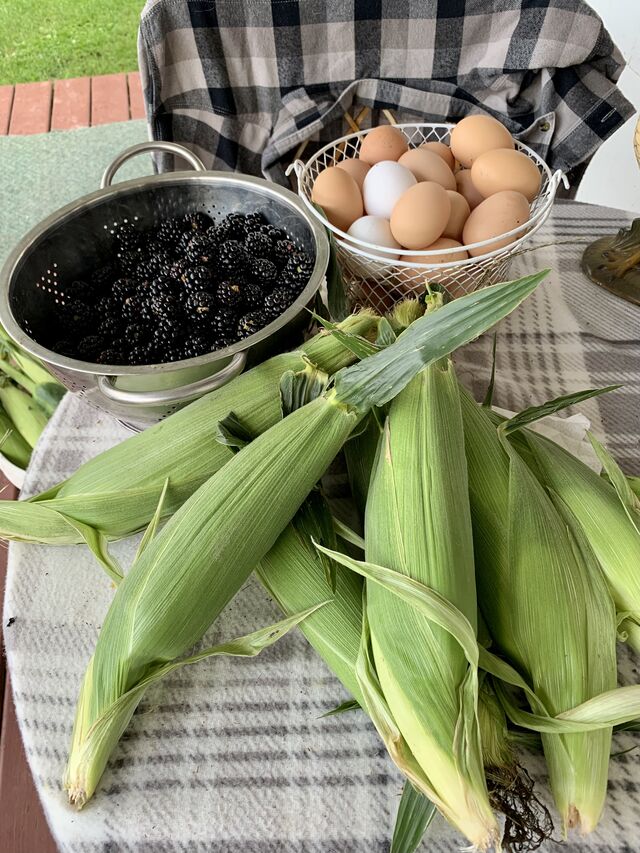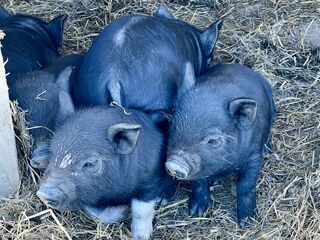Preserving the Harvest
Monday, August 8, 2022
The long hours of tending the garden, orchards and fields is starting to pay off and the harvest is beginning. Tomatoes, sweet corn, blackberries and more are ready for the picking. Time to enjoy them immediately but also time to prepare for winter.
How are you preserving your excess? Here I utilize a variety of ways. Freezing, dehydrating and canning. To do each properly you need the tools and to follow the correct process.
A good canning book is essential to safely process “canned” goods for long term storage. In addition one needs a pressure canner for low acidic foods like vegetables and meats. Note a pressure canner and a pressure cooker is NOT the the same. Potatoes, “green” beans, tomatoes and carrots typically get processed in their own jars and can be easily combined for a quick soup or stew (along with a jar of canned beef or goat, yum!) or eaten as a side dish. Tomatoes are so versatile they are another chapter all on their own.
My soft fruits typically get processed as jams, jellies and juices which I water bath. Meaning I process them in jars immersed in a large pot of boiling water. I love pickles, so cucumbers get made into bread and butter or sweet dill pickles typically.
Slice apples, zucchini, mushrooms, herbs and more are dehydrated. After achieving the correct level of dryness, they go into quart or 1/2 gallon jars in the pantry awaiting their turn to shine in recipes or as a quick snack.
I think a vacuum sealer is indispensable for freezing. Food stays fresh much longer. I do a quick 3 minute cook on my sweet corn, slice it off the cob and then vacuum seal it into small packages for the freezer. I vacuum seal my home processed chickens too. I don’t like to wholly rely on freezing my food, so I always keep plenty of jars on hand in case the contents of a freezer need quickly saved. Eggs get mixed up and poured into muffin tins. Once frozen, pop them out and put them into a gallon sized freezer bag. When egg production is low in the winter these serve perfectly for baking.
Whichever way you choose to preserve your harvest, make sure you follow good guidelines and you’ll savor the sweet tastes of summer all winter long.
How are you preserving your excess? Here I utilize a variety of ways. Freezing, dehydrating and canning. To do each properly you need the tools and to follow the correct process.
A good canning book is essential to safely process “canned” goods for long term storage. In addition one needs a pressure canner for low acidic foods like vegetables and meats. Note a pressure canner and a pressure cooker is NOT the the same. Potatoes, “green” beans, tomatoes and carrots typically get processed in their own jars and can be easily combined for a quick soup or stew (along with a jar of canned beef or goat, yum!) or eaten as a side dish. Tomatoes are so versatile they are another chapter all on their own.
My soft fruits typically get processed as jams, jellies and juices which I water bath. Meaning I process them in jars immersed in a large pot of boiling water. I love pickles, so cucumbers get made into bread and butter or sweet dill pickles typically.
Slice apples, zucchini, mushrooms, herbs and more are dehydrated. After achieving the correct level of dryness, they go into quart or 1/2 gallon jars in the pantry awaiting their turn to shine in recipes or as a quick snack.
I think a vacuum sealer is indispensable for freezing. Food stays fresh much longer. I do a quick 3 minute cook on my sweet corn, slice it off the cob and then vacuum seal it into small packages for the freezer. I vacuum seal my home processed chickens too. I don’t like to wholly rely on freezing my food, so I always keep plenty of jars on hand in case the contents of a freezer need quickly saved. Eggs get mixed up and poured into muffin tins. Once frozen, pop them out and put them into a gallon sized freezer bag. When egg production is low in the winter these serve perfectly for baking.
Whichever way you choose to preserve your harvest, make sure you follow good guidelines and you’ll savor the sweet tastes of summer all winter long.




